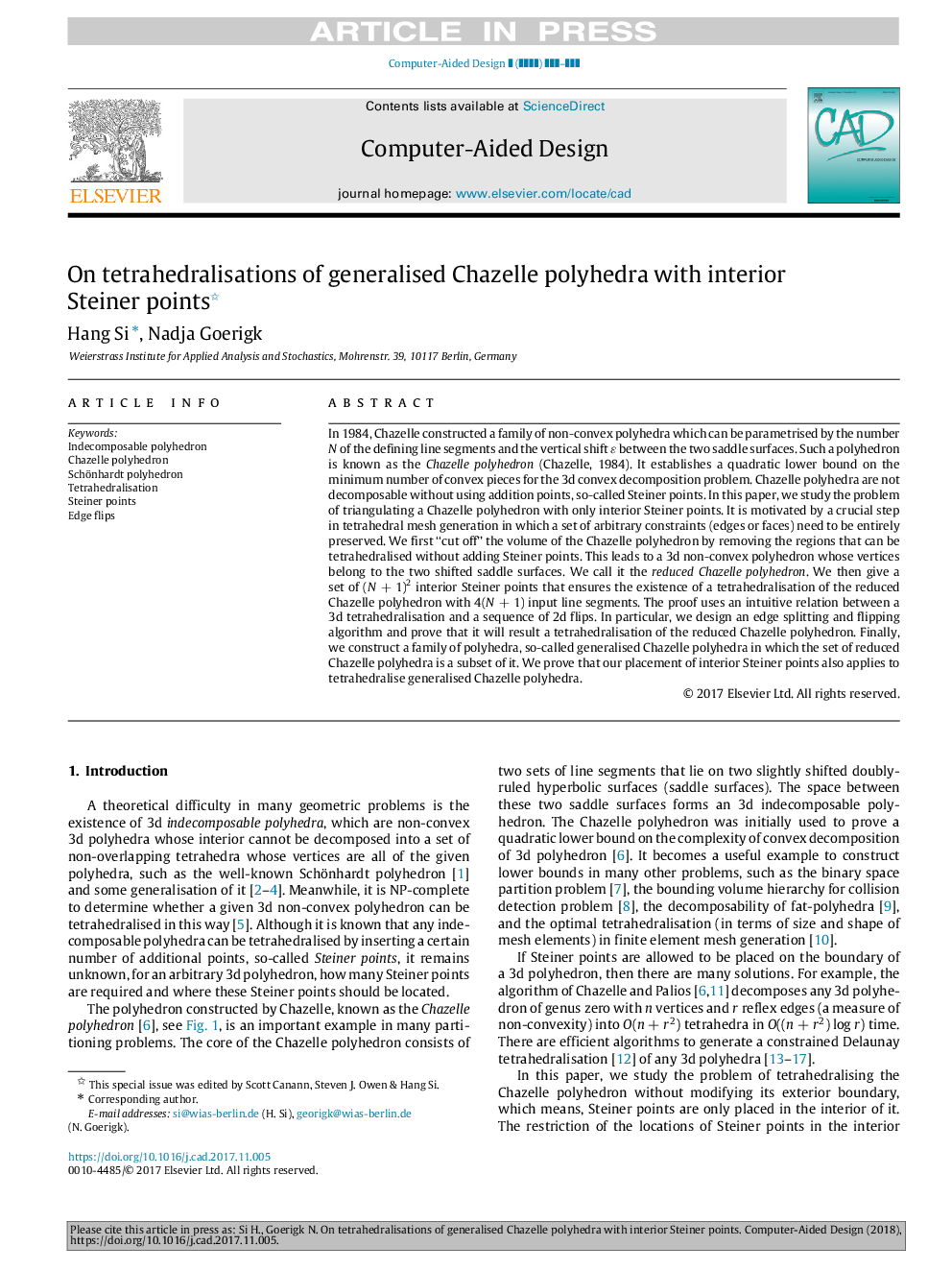| Article ID | Journal | Published Year | Pages | File Type |
|---|---|---|---|---|
| 6876379 | Computer-Aided Design | 2018 | 12 Pages |
Abstract
In 1984, Chazelle constructed a family of non-convex polyhedra which can be parametrised by the number N of the defining line segments and the vertical shift ε between the two saddle surfaces. Such a polyhedron is known as the Chazelle polyhedron (Chazelle, 1984). It establishes a quadratic lower bound on the minimum number of convex pieces for the 3d convex decomposition problem. Chazelle polyhedra are not decomposable without using addition points, so-called Steiner points. In this paper, we study the problem of triangulating a Chazelle polyhedron with only interior Steiner points. It is motivated by a crucial step in tetrahedral mesh generation in which a set of arbitrary constraints (edges or faces) need to be entirely preserved. We first “cut off” the volume of the Chazelle polyhedron by removing the regions that can be tetrahedralised without adding Steiner points. This leads to a 3d non-convex polyhedron whose vertices belong to the two shifted saddle surfaces. We call it the reduced Chazelle polyhedron. We then give a set of (N+1)2 interior Steiner points that ensures the existence of a tetrahedralisation of the reduced Chazelle polyhedron with 4(N+1) input line segments. The proof uses an intuitive relation between a 3d tetrahedralisation and a sequence of 2d flips. In particular, we design an edge splitting and flipping algorithm and prove that it will result a tetrahedralisation of the reduced Chazelle polyhedron. Finally, we construct a family of polyhedra, so-called generalised Chazelle polyhedra in which the set of reduced Chazelle polyhedra is a subset of it. We prove that our placement of interior Steiner points also applies to tetrahedralise generalised Chazelle polyhedra.
Keywords
Related Topics
Physical Sciences and Engineering
Computer Science
Computer Graphics and Computer-Aided Design
Authors
Hang Si, Nadja Goerigk,
